1. The disposable vape ban could be a reset for the category
2. Single use vapes made up 65% of vape sales at the start of 2025
3. Tobacco in independents and symbols was worth £6.1 billion last year, with ready made cigarettes accounting for 4.3 billion
4. Ultra Value has the fastest growing share of tobacco, making up 16.8% of the combined tobacco market
5. Nicotine pouches are now up 82% in volume
6. More legislation may be on the way…

1. The disposable vape ban could be a reset for the category
On June 1 2025, disposable vape sales are set to vanish in a puff of strawberry-flavoured smoke.
This marks the date it will finally be illegal for businesses to sell or supply, offer to sell or supply, or have in their possession for sale or supply all single-use or ‘disposable’ vapes.
Responsible retailers like Londis Solo Convenience owner Natalie Lightfoot will always adhere to the letter of the law. But she says that this new category reset is arriving with a lot of confusion from both customers and brands.
“To be honest it feels like not that many people really know about the disposable ban,” she says.
“Also, a lot of the brands are not providing solid information on what products will be compliant from June. Everyone’s leaving it close to the wire.”
She likens this to the “overwhelming” feeling of having to choose vape systems when the category first arrived on c-stores’ shelves.
“Right now it’s difficult,” she says.
“It’s starting to get like it was when people were working out the best systems to sell. We’re sticking to brands we know and that customers like.”
Hazel Ridge from Bassett’s Londis Weymouth hasn’t quite seen the same level of confusion. But she also serves customers who’re still in the dark.
“We have one customer who regularly comes in for ELFBARs and I mentioned that he needed to switch to a reusable product because of the ban. He just said ‘Oh, the ban’s not going to happen is it?’ And I’m like ‘Yes it is – on June first!’”
“I think they’ll be a lot of shocked faces in June.”
Whatever happens next, according to Philip Morris Limited’s research, a portfolio approach could be crucial to keeping hold of vape spend.
“Independent research conducted by KAM on behalf of Philip Morris Limited highlights that the opportunity is to be found in appealing to variety,” says John Rennie, director of commercial operations at Philip Morris Limited (PML) in the UK and Ireland.
“Findings show that 68% of independent retailers believe that success will hinge on offering a varied product portfolio – one that includes a full range of e-cigarettes, heat-not-burn products, and oral nicotine pouches, rather than relying on a single category as they may have done so previously with disposables.”

2. Single use vapes made up 65% of vape sales at the start of 2025
Giving up single-use vapes is going to be tough – especially as they still account for the lion’s share of vape sales.
“Demand for these more traditional vapour products remains strong despite these pending changes,” says Susanna De Iesu, BAT UK’s commercial director UK&I.
“According to data from Nielsen, there have been over 18 million single-use vapes sold across all brands since the start of 2025, which makes up 65% of all vapour sales in that time [stats as in header].”
“In the short term, single-use vapes are expected to remain the dominant product category until the ban takes effect in June,” adds Angelo Yang, associate general manager, UK at ELFBAR.
“During this period, reusable devices, particularly prefilled pods, are anticipated to gain further traction and growth to then accelerate in the second half of the year. The shift towards reusable alternatives presents a significant opportunity for retailers who adapt early to upcoming changes by diversifying their product offerings with alternatives to single-use vapes.”
ELFBAR research suggests that adults who use single-use products will mainly be looking to switch to reusable options. That’s why it’s been busy launching reusable versions of its original and LOST MARY products. Plus, it’s also put its marketing heft behind high-puff lines.
Hazel, who’s a vaper herself, says that customers need to be educated on the different products.
“We can show a customer the [reusable] products that we do,” she says.
“It’s interesting, because one flavour with one brand doesn’t always taste the same as the same flavour with another.”

3. Tobacco in independents and symbols was worth £6.1 billion last year, with ready made cigarettes accounting for 4.3 billion
For years now the UK government has been trying to snuff out smoking for good. Which has translated to far fewer smokes going through the tills.
“Cigarettes and tobacco have been in decline for a while now,” says Natalie.
“Many people have switched to vapes. And younger [adult] shoppers just aren’t buying into cigarettes.”
Yet as long as cigarettes remain legal, terminally addicted older smokers will stick with them until the last gasp. In fact, 70% of shoppers who purchase tobacco say it’s their main reason for visiting a store [Lumina intelligence convenience tracking programme, L52W to w/e 15/09/24].
“Nicotine remains an important category for convenience retailers to get right, not only for the revenue it brings into their till, but as a driver of footfall and repeat business from regular customers and the associated basket spend which goes with that,” says Prianka Jhingan, head of marketing at Scandinavian Tobacco Group UK.
“While traditional tobacco sales have been in decline for some time now, what’s left is still huge and of course many consumers have been transitioning over to next gen products such as vapes or nicotine pouches, which have also become an important part of the mix.”

4. Ultra Value has the fastest growing share of tobacco, making up 16.8% of the combined tobacco market
It’s no surprise that as the price of cigs spikes, cost-of-living-crushed consumers are choosing the cheapest options from the gantry.
“As consumer preferences shift towards more cost-effective options, the demand for Ultra-Value tobacco brands continues to rise,” says Mark McGuinness, marketing director at JTI UK.
“This segment is the fastest-growing category in terms of market share. By prioritising these value-driven offerings, retailers can not only meet the needs of budget-conscious smokers but also tap into a high-growth sector – ensuring they remain profitable in a competitive market.”
To support the segment JTI dropped the price of Mayfair Gold by 80p to £12.50 for a pack of 20 in January.
However, though price is important, Hazel says that it isn’t everything.
“Our highest-seller is Chesterfield Reds but they’re not actually my cheapest cigarette,” she says.
“I think that people mainly chose them when they were extremely cheap. And now they’ve stuck with them.”
“It seems to be a generational thing with cigarettes. Some people don’t really care [what brand] they buy. But others have been smoking so long and they want a particular brand because they’ve been smoking it for 50 years.”
Despite recent price rises roll-you-own (RYO) is still considered a thrifty option for cig-smokers.
“We’ve seen the share of the market for value RYO products increase by nearly two percentage points year on year, making it the fastest-growing segment, now accounting for more than a quarter (24%) of all RYO sales [ITUK Data October 2024],” says Andrew Malm, UK market manager for Imperial Brands.
Imperial now has a 40g pouch size for Golden Virginia Original (sitting between established 30g and 50g packs) as another response to price inflation.
“The new size bridges the price gap, offering a more manageable cost when purchasing an individual pouch,” says Malm.

5. Nicotine pouches are now up 82% in volume
Outside of vapes, customers still fiending for nicotine are increasingly hitting the pouches.
“Our latest data shows the category is worth over £131m in annual retail sales and this figure doesn’t include sales taking place online,” says Jhingan.
“This reflects year on year growth of 82% in volume terms, offering clear evidence to its growing popularity and consumer demand: [IRI Marketplace, Value and Volume sales, Time Period: w/e 22-12-24].”
As Natalie says about vapes “I don’t think flavour is going anywhere.” And this trend has migrated to pouches too with XQS adding two new flavours: black cherry and citrus cooling.
Meanwhile, ZYN is proving one of the category’s most prominent brands – not least because it’s increasingly gaining traction on TikTok.
“This trend [for pouches] is expected to continue as awareness among adult smokers and legal-aged nicotine users increases,” says Rennie.
“For ZYN, the world’s number one nicotine pouch brand, we’ve observed an impressive 161% increase in volumes this year compared to the previous year.

6. More legislation may be on the way…
The June first ban might be the latest legislation to upend the category. But it definitely won’t be the last. Already, a ban on both vape flavours and displays has been mooted. In response, the industry is already on the offensive.
“Research from ELFBAR reveals that if overly restrictive regulations are imposed on flavours, packaging and displays in addition to the single-use ban, around 2 million UK vapers (35%) could resort to illegal single-use vapes, return to smoking, or increase their tobacco consumption,” says Yang.
Elsewhere, McGuinness is weighing up the costs of a “generational ban” for tobacco.
“A recent survey found that with 78% of retailers feel like a generational ban would lead to more illicit tobacco in their local area,” he says.
“This is having serious ramifications on the incomes of honest retailers, not only as it impacts their legitimate tobacco sales, but also as they miss out on wider basket spend with shoppers visiting other stores.
“We also know that verbal or physical abuse against shop workers is sadly on the rise in the UK, with age verification a key reason behind this. If the government presses ahead with a proposed generational ban, retailers will be at greater risk of abuse in the years ahead, impacting on their physical and mental health.”




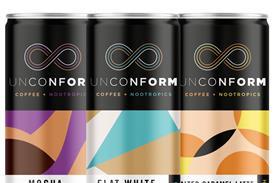

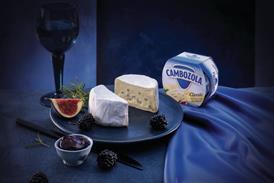
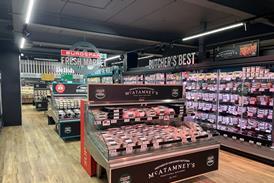
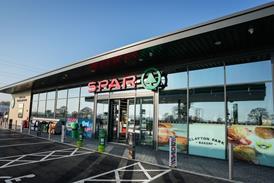


![WG-4003[58]](https://d2dyh47stel7w4.cloudfront.net/Pictures/274x183/4/5/1/353451_wg400358_6083.jpg)




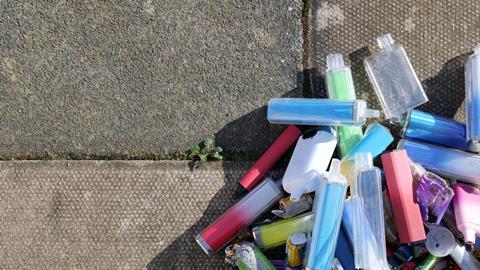
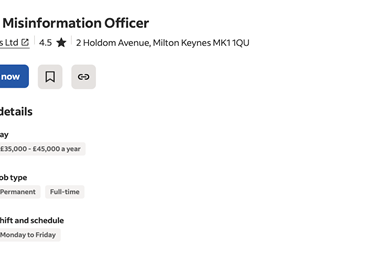

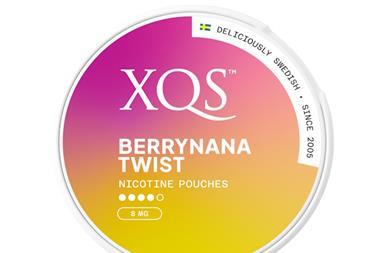

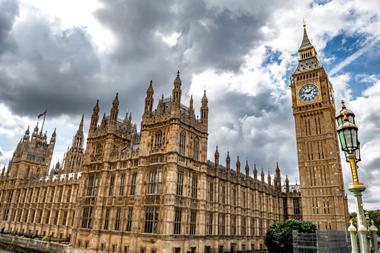







No comments yet